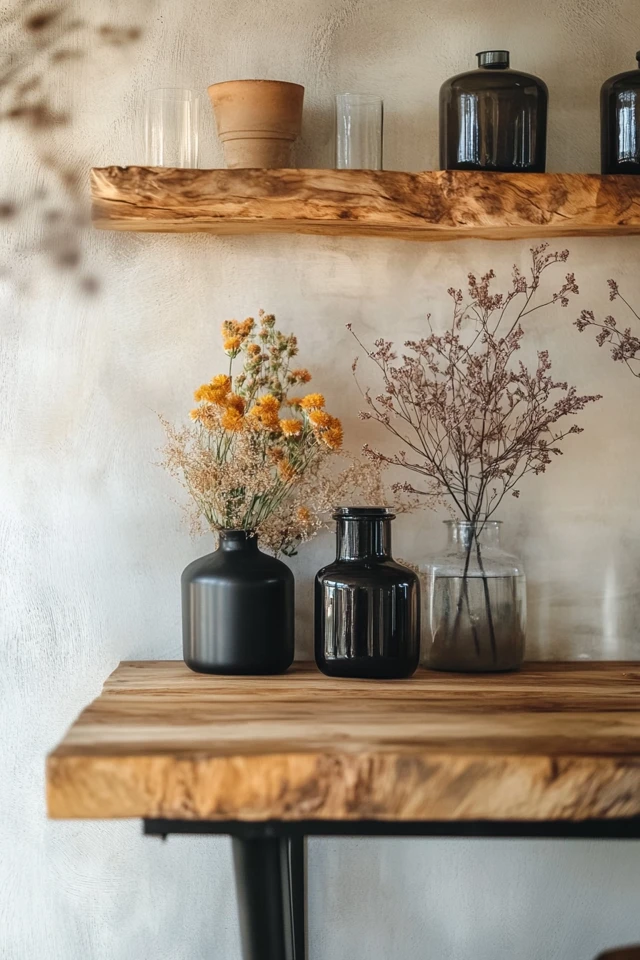Introduction
One of the things I love most about bohemian design is its fearless approach to combining textures, materials, and finishes. It’s a style that encourages you to mix and match with abandon—but even in the world of boho, there’s a fine line between effortlessly eclectic and visually chaotic. I learned this the hard way during a redesign of my living room. I had a beautiful reclaimed wood coffee table and an antique brass floor lamp, but when I added a black metal bookcase into the mix, the room suddenly felt disjointed. That’s when I realized that successfully mixing woods and metals requires a bit of strategy.
Bohemian design thrives on layering different materials, and wood and metal are two of the most versatile and impactful. Wood brings warmth and grounding energy, while metal adds a touch of shine and sophistication. When paired correctly, these elements can elevate your space and create a harmonious yet dynamic look.
In this blog, I’ll share the key principles for mixing woods and metals in bohemian design. From balancing tones to layering textures, these tips will help you create a room that feels cohesive, stylish, and effortlessly boho.
Step 1: Start with a Color Palette
Why It Matters
A cohesive color palette provides the foundation for mixing different materials and ensures the space feels harmonious.
Tips for Choosing a Palette:
- Stick to 2–3 dominant colors with 1–2 accent tones.
- Opt for earthy, neutral hues like beige, cream, rust, or olive green for a true boho feel.
- Match the tones of your woods (e.g., warm, cool, or neutral) with your chosen color palette.
Pro Tip:
Use your color palette to guide the finishes of your metals. For example, pair warm woods with gold or brass and cooler woods with black or silver metals.
Step 2: Balance Warm and Cool Tones
Why It Matters
Balancing warm and cool tones creates depth and prevents the space from feeling one-dimensional.
Warm vs. Cool Materials:
- Warm Woods: Walnut, mahogany, oak, and cherry.
- Cool Woods: Ash, birch, and driftwood.
- Warm Metals: Brass, copper, and gold.
- Cool Metals: Silver, chrome, and black iron.
How to Mix:
- Pair warm woods with cool metals for contrast.
- Use warm metals like brass or copper with cool woods to balance their lightness.
- Incorporate neutral elements, like rattan or jute, to tie everything together.
Step 3: Vary Wood Finishes
Why It Matters
Mixing wood finishes adds dimension and keeps the design from feeling too uniform.
How to Mix Wood Finishes:
- Combine light and dark woods to create contrast.
- Use a dominant wood tone for larger pieces (e.g., flooring, a dining table) and add smaller accents in complementary tones.
- Match undertones (e.g., warm-toned woods with each other) for a cohesive look.
Pro Tip:
When mixing multiple wood tones, aim for a ratio of 70-30 or 60-40 to create balance without overwhelming the space.
Step 4: Layer Metals Strategically
Why It Matters
Layering metals in a thoughtful way adds sophistication and a touch of bohemian charm.
Tips for Mixing Metals:
- Stick to 2 metal finishes to avoid visual clutter.
- Use one dominant metal (e.g., brass) and one accent metal (e.g., black iron).
- Distribute metals evenly throughout the space—don’t cluster them all in one area.
Pro Tip:
For a cohesive look, repeat each metal finish at least twice in the room, such as pairing a brass light fixture with brass hardware.
Step 5: Incorporate Texture
Why It Matters
Texture is a hallmark of bohemian design and helps bridge the gap between woods and metals.
How to Layer Textures:
- Add softness with woven textiles like rugs, throws, and pillows.
- Use natural elements like rattan, bamboo, or jute to complement wood and metal.
- Incorporate hammered or brushed metals for added depth.
Pro Tip:
Mixing textures softens the contrast between woods and metals, creating a more cohesive look.
Step 6: Use Accent Pieces to Tie It All Together
Why It Matters
Accent pieces help connect the different materials in your space and add personality to your design.
Ideas for Accents:
- A mirror with a wooden frame and metallic inlays.
- A coffee table with a wood top and metal legs.
- Decorative trays or bowls that combine metal and wood.
Pro Tip:
Look for hybrid pieces that blend wood and metal, such as industrial-style furniture or handcrafted decor.
Step 7: Focus on Proportions
Why It Matters
Balancing the proportions of wood and metal in the room ensures no single material overpowers the design.
How to Balance Proportions:
- Use wood as the dominant material for larger pieces, like tables, shelves, or headboards.
- Reserve metal for smaller accents, like lighting, hardware, or decor.
- For a more industrial-boho look, flip the proportions and use metal as the dominant material.
Step 8: Highlight with Lighting
Why It Matters
Lighting not only enhances the aesthetic but also ties together the wood and metal elements in your space.
Lighting Ideas:
- Use a metallic pendant light to draw attention to a wooden dining table.
- Incorporate floor lamps or table lamps with mixed-material bases.
- Add string lights or candles to create a warm, inviting ambiance.
Pro Tip:
Choose warm-toned bulbs to highlight the richness of your woods and metals.
Picture Gallery
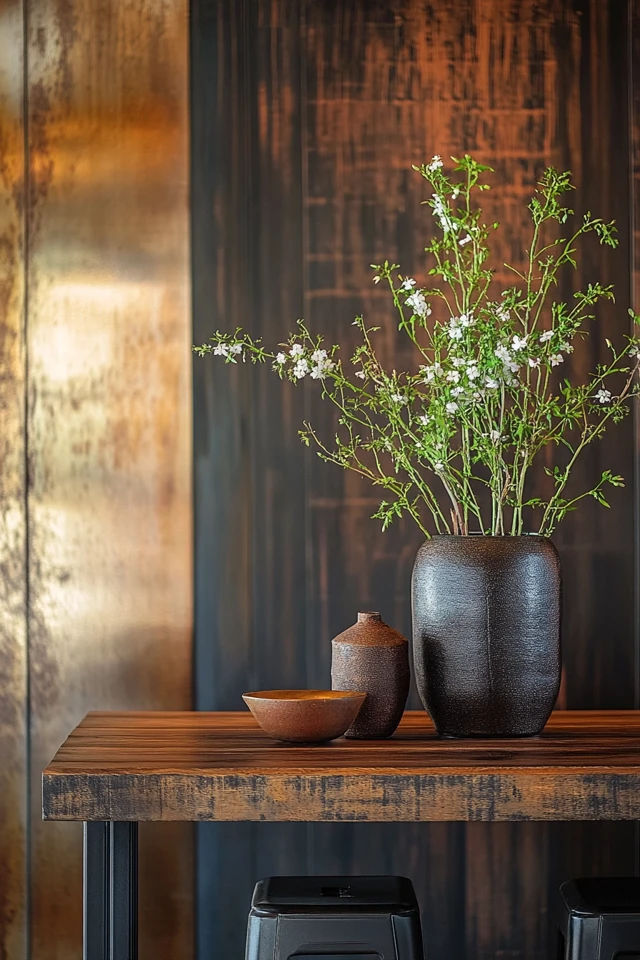
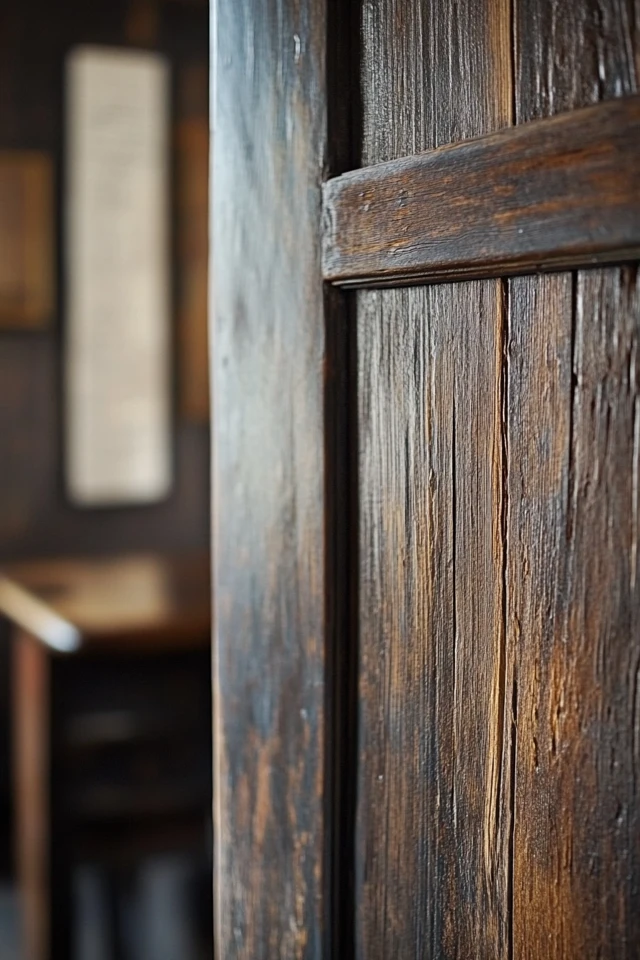
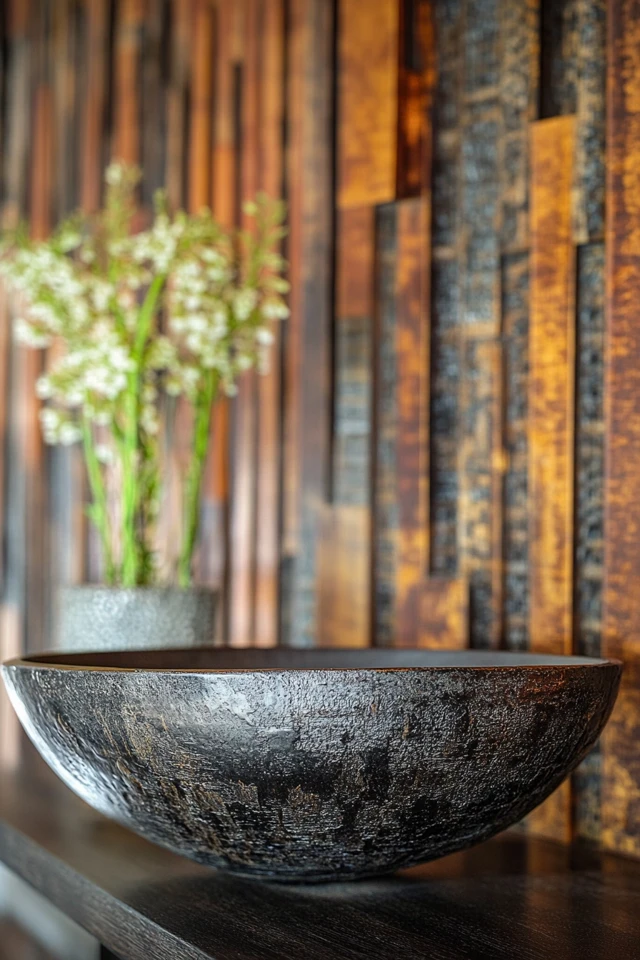
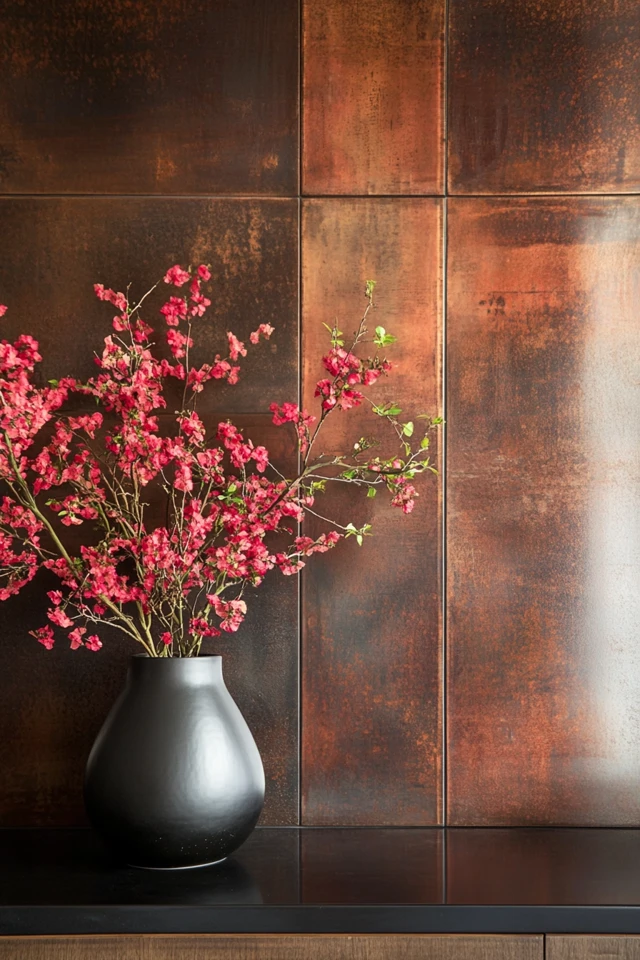
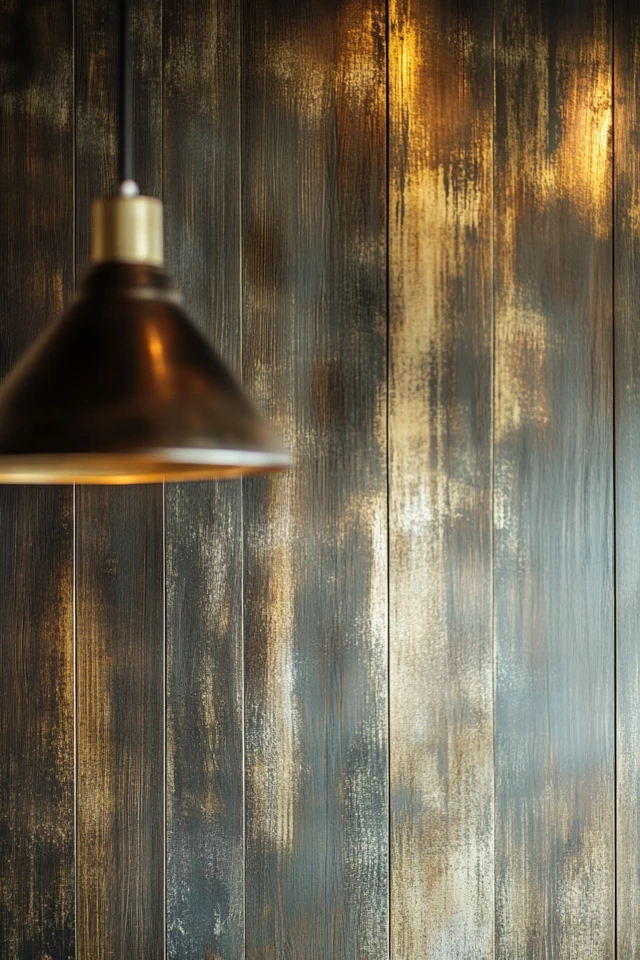

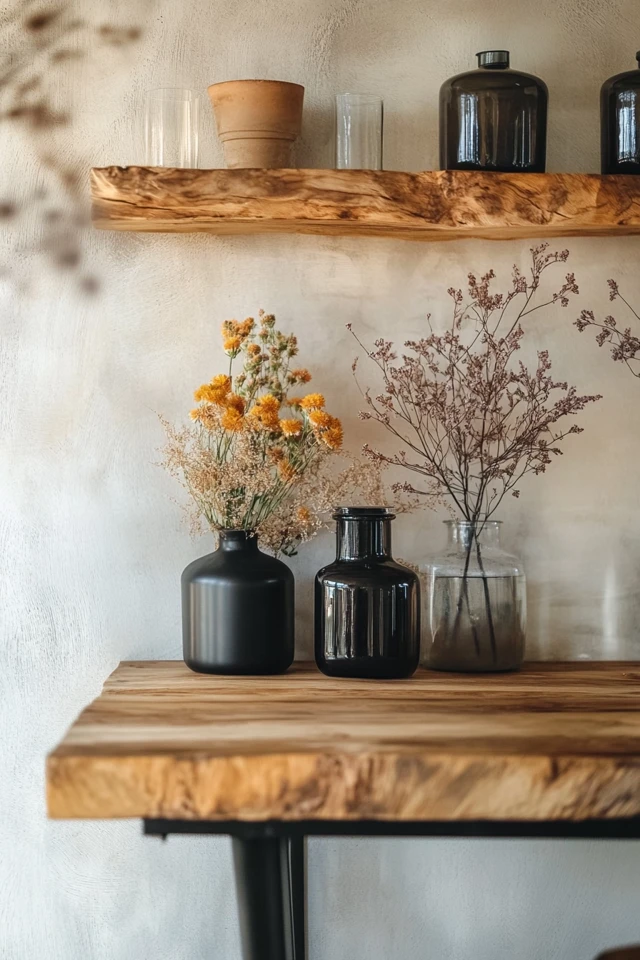
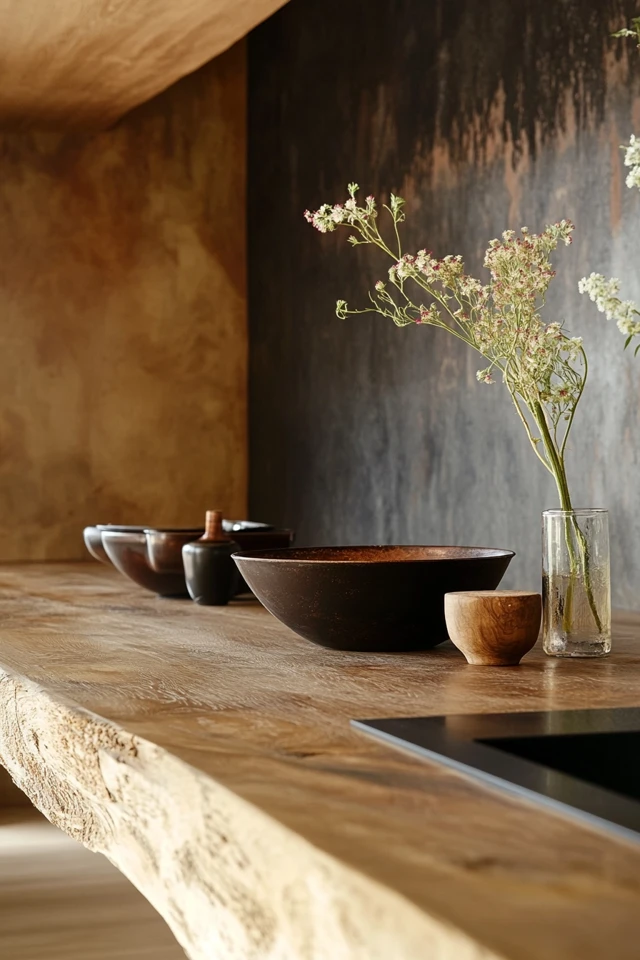
Conclusion
Mixing woods and metals in bohemian design is all about balance, contrast, and creativity. By thoughtfully blending these materials, you can create a space that feels layered, warm, and full of personality. Whether it’s a walnut coffee table paired with brass accents or a birch bookshelf complemented by black iron, the right combination can transform your room into a boho haven.
Looking back on my own journey, I’ve come to appreciate the art of mixing materials. It’s a process of experimentation, where each piece plays a role in telling your story. So, don’t be afraid to play with textures, finishes, and proportions—let your intuition guide you as you design a space that feels uniquely yours.
FAQ
1. How many wood tones and metal finishes should I use in a room?
Stick to 2–3 wood tones and 2 metal finishes to maintain balance without overwhelming the space.
2. Can I mix warm and cool metals in the same room?
Yes! Mixing warm and cool metals creates contrast, but make sure to distribute them evenly throughout the space.
3. What’s the best way to start mixing woods and metals?
Start with a dominant wood tone and a single metal finish, then gradually add complementary pieces as accents.
4. How do I avoid clashing wood tones?
Focus on matching the undertones (warm, cool, or neutral) of your wood finishes, even if they’re different shades.
5. Can I mix industrial-style metals with boho decor?
Absolutely! Industrial metals like black iron or brushed steel pair beautifully with warm woods and woven textures in bohemian spaces.

